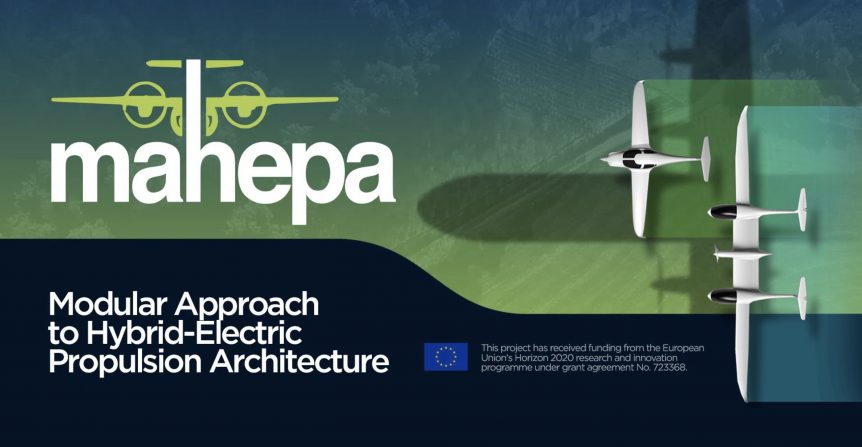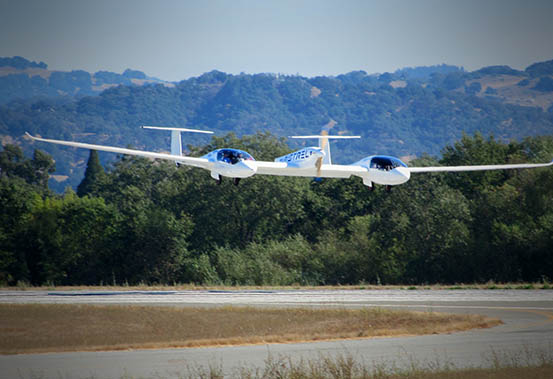MAHEPA (Modular Aproach to Hybrid-Electric Propulsion Architecture) is a European Union project to build emission-free aircraft. A public flight of Pipistrel’s HY4 hydrogen-powered, four-seat aircraft was the latest demonstration of the group’s progress. Challenging Objectives Overall, MAHEPA hopes to accomplish five objectives: Advancing the fuel-driven serial hybrid-electric Powertrain which uses a lightweight internal combustion engine (ICE), capable of running multiple fuels as the power generation module. Advancing the reliability of zero-emission serial hybrid-electric powertrain which uses a Proton Exchange Membrane (PEM) Hydrogen Fuel Cell (FC) as the power generation module. Advancing new airborne qualified, lightweight, high-power density components such as a 200 kW+ electric motor, a 100 kW+ generator and improved power electronics using Silicon Carbide (SiC) technology to increase efficiency of power transmission due to decreased switching losses. Developing “common building blocks” solutions also for different aircraft configurations, enabling the proliferation of powertrain modules between various aircraft. Gathering, analyzing and comparing in-flight performance and emission data in order to …
Dr. Joseph Kallo, DLR See a Hydrogen Future
Speaking at the first annual Sustainable Aviation Symposium at the Sofitel San Francisco Bay on May 6, 2016. Dr. Joseph Kallo focused on hydrogen as a more than potential fuel for future flight. He stressed that H2 fuel development was further along than one would think, and shared several examples to promote that thought. A Busy Man, a Storied Airframe Dr. Kallo is DLR (Deutsches Zentrum für Luft-und Raumfahrt – German Center for Air and SpaceTravel) Coordinator of Electrical Aviation for Germany’s equivalent of NASA, oversees work at the DLR Institute of Engineering Thermodynamics, which has worked with Pipistrel in Slovenia to convert the Green Flight Prize winning Pipistrel G4 to the hydrogen-powered HY4. He’s also Institute Director at the Institute of Energy Conversion and Storage, Ulm University. That group provides expertise on hybridization for the HY4 project. Ulm partners with aircraft designer Pipistrel, fuel cell provider Hydrogenics, and DLR to make the aircraft a reality. H2Fly will operate the …
The Sustainable Aviation Symposium – A Wealth of Knowledge
Coming May 6th and 7th, the first-ever Sustainable Aviation Symposium will take place at the Sofitel San Francisco Bay Hotel. This year’s presenters include an international array of accomplished talent in aerodynamics, power, and energy storage, with a few surprises on tap. Keynote speakers include: NASA Chief Scientist Dennis Bushnell PADA Trophy winner and Pipistrel Designer Dr. Tine Tomazic Dr. Joseph Kallo of the DLR (Germany’s NASA) Lehigh University’s Dr. Justin Jaworski Pelican Aero Group’s Philip Barnes Additional presentations include Nobel Prize winner Dr. Benjamin Santer of the Intergovernmental Panel on Climate Change; Eric Raymond, the highest time solar pilot in the world (his latest 6-seat solar aircraft pictured above); Dr. Yi Cui of Stanford University with the latest in battery technology, Dr. Daniel P. Raymer on Inspirations from the Vought 173 and PADA Trophy winner Boris Popov, whose ballistic parachutes have saved hundreds of lives. Another dozen, including NASA battery expert Dr. Eric Darcy and Siemens e-Aircraft head Dr. Frank …
G4 to HY4 – Swapping Batteries for Fuel Cells
The University of Stuttgart and Pipistrel started down similar paths around 2007, with the Stuttgarters attempting a hydrogen-powered two-seat aircraft, the Hydrogenius; and Pipistrel developing a self-launching craft with either two-stroke power or an equivalent electric motor. The two groups came to rely on one another, with hydrogenius using the forward fuselage and wings of the Taurus G2 with hydrogen tanks in the fuselage and a Sineton motor on the tail. On February 27, 2008, Professor Rudolf Voit-Nitschmann, the father of the solar powered aircraft Icare 2 and the unofficial World Record holder for distance flown in a solar powered aircraft, along with dipl. ing. Steffen Geinitz and dipl. ing. Len Schumann met with Pipistrel leaders, including CEO Ivo Boscarol and designer Tine Tomazic at the company headquarters in Ajdovscina. Because the area aft of the wing was different for the Pipistrel G2 and Hyrogenius, the fuselages looked entirely different. Hydrogenius used the volume behind the wing to stow the H2 …
EAS VIII: Klaus Ohlmann Conquers Everest
Klaus Ohlmann says the sailplanes and solar-powered aircraft in which he has set several world records are powered by a “gravitational engine with an external fusion reactor.” He has been on a sun-stoked roll the last few years. His recounting of the epic journey first to fly a Stemme motorglider from Germany to Katmandu, and then to conquer Mount Everest in a sailplane, kept the eighth annual Electric Aircraft Symposium audience enthralled. That feat alone would be enough for admiration, but his seemingly never-ending series of adventures provoke a bit of awe. He is a member of the Mountain Wave Project (MWP), a group which explores high-altitude weather systems to verify theoretical considerations. As stated in the MWP’s web site, it is “a project of the scientific and meteorological panel of OSTIV (Organisation Scientifique et Technique du Vol à Voile) …conceived during an OSTIV seminar 1998 in Serres/France by René Heise and Klaus Ohlmann and attracted several enthusiastic scientists/pilots since.” He holds the world’s …
Being Led By The Nose
With speculation in CAFE circles about the use of thin, lightweight motors now available for landing and takeoff augmentation, it comes as almost now surprise that DLR, the German Aerospace Centre, and the Airbus people at EADS have announced development of an electric nose wheel that could replace airport tugs and extended ground operation for airliners’ jet engines. According to The Engineer, a British publication, a fuel cell-powered system delivers electrical energy capable of powering the nose wheel of a 70-ton aircraft. “Commercial aircraft could cut their on-ground emissions by one quarter with a new hydrogen fuel-cell propulsion system, according to its creators. “For short-haul aircraft that often take off and land seven times a day, this could save between 200 and 400 litres of kerosene per day while reducing noise by around 95 per cent, without the use of towing vehicles.” Tested in the DLR laboratories, the twin electric motors are about to be checked out on a real A320. …
ENFICA-FC – A Speed Record for Hydrogen
Professor Guilio Romeo of the Politecnico de Torino, Italy is a man of many firsts. Last year, his team fielded Skyspark, a Pioneer 300 powered with an electric motor fed by batteries. This year, in a totally new development, Professor Romeo coordinated the activities leading to a successful hydrogen-powered electric aircraft, and set a world speed record to top off that accomplishment. The Skyleader 150 Zero CO2 light sport aircraft, built by JIHLAVAN airplanes, Ltd. in the Czech Republic, was fitted with Intelligent Energy proton exchange membrane (PEM) fuel cells from the United Kingdom, an inverter and power management system by Italy’s Mavel Elletronica, and a motor at least partially designed by the University of Pisa, Italy. Tanks and a high-pressure fuel delivery system were created by the UK’s Air Products Limited. Labeled ENFICA-FC (Environmentally Friendly Inter City Aircraft Powered by Fuel Cells) the airplane was actually the fourth machine to fly on hydrogen power, the first being a Boeing conversion of a …



